Polish Genealogy: 4 Steps to Find Your Family History
Researching your Polish genealogy may seem a little intimidating at the start. Read these get-started tips from a Polish genealogy veteran at Legacy Tree Genealogists. Then you’ll know how to dive right into your Polish family history–and where to turn if you need a little help.
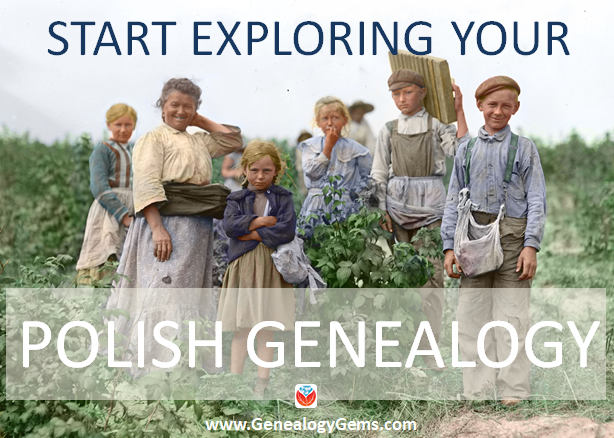
Thanks to Legacy Tree Genealogists for supplying this guest blog post. Legacy Tree employs researchers with a wide range of expertise. They asked their Polish expert, Julie, to share tips for finding Polish ancestors, based on her decades of experience.
If you’re an American researching your Polish ancestors, you aren’t alone. Polish Americans make up the largest Slavic ethnic group in the United States, second largest Central and Eastern European group, and the eighth largest immigrant group overall. So how do you begin tracing your roots in Poland?
Get Started: 4 Polish Genealogy Tips
1. Get to know the basics of Polish history.
Probably every Polish-American family has heard mention of the “border changes” that were supposedly the reason why Grandpa’s papers say he was from Austria, although everyone knew he was Polish. What many people don’t realize is that Poland did not exist as an independent nation from 1795 until 1918. Historically, Polish lands were partitioned among the Russian, Prussian, and Austrian Empires, and ethnic Poles were citizens of one of those three nations. This is why you might see your Polish ancestors stating Russian birth on the 1910 U.S. census, but Polish birth on the 1920 U.S. census, after Poland was reestablished as an independent nation.
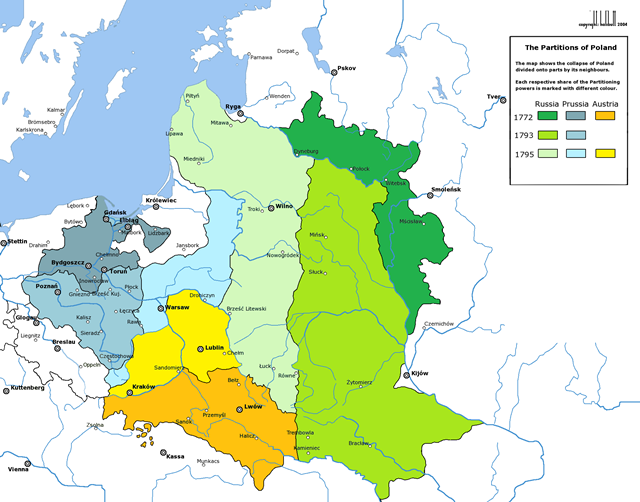
By Rzeczpospolita_Rozbiory_3.png: Halibuttderivative work: Sneecs (talk) – Rzeczpospolita_Rozbiory_3.png, CC BY-SA 3.0, click to view on Wikipedia.
2. Determine your Polish ancestor’s religion.
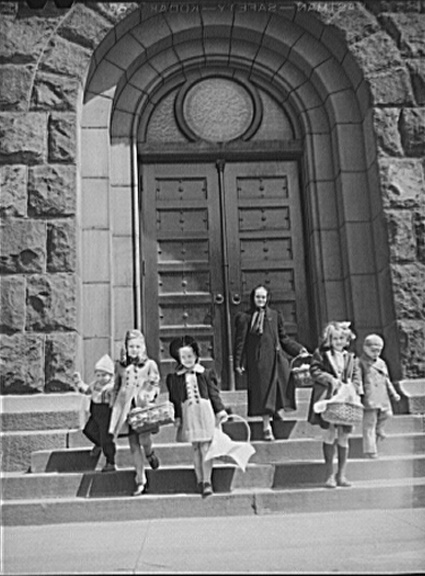
Buffalo, New York. Children of the Polish community leaving church with baskets of food on the day before Easter. Library of Congress photo; digital image via Wikipedia. Click to view.
Although we in the U.S. are accustomed to the separation of church and state, this was not the case in many places. In Poland, it was common for priests, ministers, or rabbis to act as civil registrars, blending ecclesiastical and government authority as they recorded births, marriages, and burials. Although this was the protocol in all three partitions for the majority of the 19th century, the exact span of dates in which this was true vary based on the partition in which your ancestors lived, and greatly affects where you should be searching for the records you need. In “Russian Poland,” for example, civil record keeping began in 1808 with Roman Catholic priests acting as civil registrars for people of all faiths (not just Catholics). Beginning in 1826, each faith was allowed to keep its own civil records using a paragraph-style format that remained relatively stable through the 1930s. Civil registration that was independent of any religious organization did not begin until 1945.
The fact that civil copies of church records were made increases the likelihood that records survived for your ancestor’s town. There’s a persistent myth that “all the records were destroyed in the wars,” but that’s simply not true in most instances. Existing records for some locations date back to the 1600s, but in other places surviving records are sparser.
3. Use U.S. records to determine your ancestor’s precise place of origin.
Grandma may have said that her father came from Warsaw, but most of our ancestors came from small villages, not large cities. It’s more likely that her father was using Warsaw as a point of geographic reference to give people a rough idea of where he lived, since others are unlikely to recognize the name of a small village. This means that you most likely won’t find his birth record by looking for it in Warsaw, but it also leaves you in the dark about where to look instead.
 What kinds of records are most likely to indicate a precise place of birth? Passenger manifests and petitions for naturalization (if dated after 1906) are great sources for this information. If your Polish ancestors were Catholic, church records from the parish they attended in the U.S. are much more likely to contain specific place of birth than their civil equivalents. These include marriage records for immigrants who married in the U.S., baptismal records for U.S.-born children of immigrants, and church death/burial records.
What kinds of records are most likely to indicate a precise place of birth? Passenger manifests and petitions for naturalization (if dated after 1906) are great sources for this information. If your Polish ancestors were Catholic, church records from the parish they attended in the U.S. are much more likely to contain specific place of birth than their civil equivalents. These include marriage records for immigrants who married in the U.S., baptismal records for U.S.-born children of immigrants, and church death/burial records.
Click here for an article about a woman who found her Polish Catholic grandparents’ church marriage record–and with it their overseas birth place–at St. Stanislaus parish in Buffalo, NY. You’ll also learn tips for finding Catholic church records in the U.S.
If your ancestors were Jewish, check cemetery records for mention of any landsmannschaft to which they might have belonged. Landsmannschaften were fraternal aid societies organized by immigrants from the same town in Europe, and they frequently purchased large burial plots for their members.
4. Use a gazetteer to determine the parish or registry office that served your ancestor’s village.
Depending on which partition your ancestors came from, some good gazetteers include:
- The Słownik geograficzny Królestwa Polskiego i innych krajów słowiańskich, or Geographical Dictionary of the Kingdom of Poland and Other Slavic Countries, published between 1880 and 1902 in 15 volumes. The SGKP is written in Polish.
- The Skorowidz Królestwa Polskiego, which includes all of Russian Poland (officially known as the “Królestwo Polskie” or Kingdom of Poland) published in 1877. The SKP is mostly written in Polish with some text in Russian.
- Kartenmeister, an easy-to-use online gazetteer for “German Poland” that covers East Prussia, West Prussia, Brandenburg, Posen, Pomerania, and Silesia. Kartenmeister can be searched using either the German or the Polish name for a town.
- The Galician Town Locator, offered by Gesher Galicia, is another easy-to-use resource that covers the historic Galicia region, which was a part of the Austrian Empire that is now split between Poland and Ukraine.
- The JewishGen Gazetteer is a phonetic gazetteer to assist in identifying the correct location in cases where your ancestor’s place of origin is misspelled on U.S. records. It covers areas throughout Central and Eastern Europe.
Once you have correctly identified both your ancestor’s place of birth and the location of his place of worship or civil records office, you’re ready to make the jump back to records in Poland.
Get Expert Help with Your Polish Genealogy Questions
 We at Legacy Tree Genealogists would be honored to assist you with any step along the way in your journey to discover your ancestral origins, including onsite research if needed. Our experts have the linguistic and research skills to efficiently find your family. Contact us today for a free consultation.
We at Legacy Tree Genealogists would be honored to assist you with any step along the way in your journey to discover your ancestral origins, including onsite research if needed. Our experts have the linguistic and research skills to efficiently find your family. Contact us today for a free consultation.
Exclusive offer for Genealogy Gems readers: Save $100 on a 20-hour research project using code GG100, valid through October 31st, 2017.
Scots-Irish Genealogy: Getting Started
Researching your Scots-Irish genealogy is easier if you can identify your ancestors as Scots-Irish! The Scots-Irish put down early roots in Virginia, the Carolinas, and the Appalachian “backcountry” and would likely have come from Northern Ireland or Scotland. Read...Tracing your African American Roots: Top Tips
Researching African American roots has unique challenges. This Q&A with expert Angela Walton-Raji can inspire you with tips and success stories. Learn what to ask, what history you should know, how to face the 1870 “wall” and how to explore your ancestor’s freedom...British Isles Genealogy: New Records Online for England, Scotland, Ireland
Trace your British Isles genealogy! This week we report on new genealogy records online for England, Scotland, and Ireland. Read about WWI weekly casualty lists, free census records at FreeCen, English and Scottish burials, Scottish poorhouse–and a free British Newspaper Archive webinar on learning about migration and travel in old newspapers.
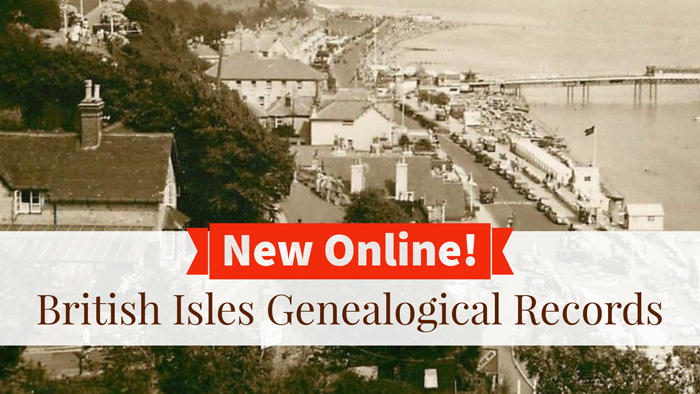
British Isles Genealogy: Free and Fee Records Now Online
NEW! Free UK census records website
The same team of volunteers who bring us FreeBMD and FreeREG have now launched FreeCEN, a free website offering free-to-search 19th-century UK censuses. “Transcribed entirely by volunteers, we have more than 32 million individuals available on our website that anyone can search without having to create an account,” states a press release. “FreeCEN2 also brings with it a host of improvements for existing and future volunteers, such as a members sign-in area and brand new messaging system.” NOTE: This site may not be comprehensive for every kind of record you’re looking for. But it’s free, and definitely worth exploring, whether you want to search its collections or volunteer to help add to them.
England burial records: Staffordshire, Lincolnshire
Findmypast.com subscribers can now access over 127,000 entries in its Staffordshire Monumental Inscriptions, providing information on burials in “168 churchyards, burial grounds, and cemeteries throughout the county. This record sets can help you discover an ancestor’s birth date, death date, and residence, as well as the name of other family members such as parents, spouse, or children.”
About 90,000 new records have been added to Findmypast’s Lincolnshire Burials 1754-1812, which now totals over 1.5 million records covering over 300 locations across the county. For each person, you might find age at death, birth year, burial date, and location.
Scotland, West Lothian
Findmypast.com has published new records relating to West Lothian, located in the south of Scotland. According to the site, the area was “known as Linlithgowshire until 1921. The county was home to the Scottish monarchs of the 15th and 16th centuries.”
- Linlithgowshire Poorhouse records, with details on more than 15,000 people admitted between 1859 and 1912. “The collection contains a variety of different record types including admissions, deaths, discharges, and sick rolls that will reveal your ancestor’s admission date, behavior during their stay, previous residence, and more.”
- Burials, 1860-1975. Over 87,000 transcripts of burial records spanning 115 years. “Each transcript that will reveal the date of your ancestor’s burial, the location of their grave, their occupation, residence, death date, and in some cases the names of additional family members.”
WWI Weekly Casualty List at The British Newspaper Archive
The historically significant Weekly Casualty List (1917-1918, published by the War Office & Air Ministry) lists names of soldiers who were killed, wounded, or declared missing during the First World War. The War Office and Air Ministry updated and published the lists weekly and our current holdings cover the latter years of the conflict. Over 2,400 digitized pages are published in this collection.
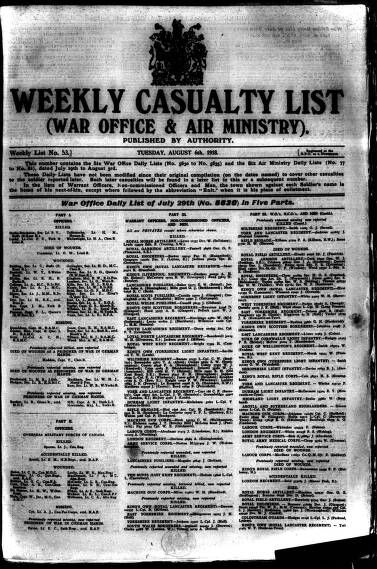
More new collections at the British Newspaper Archive
 England:
England:
- Derbyshire: This brand new collection for the Ripley and Heanor News and Ilkeston Division Free Press for the town of Ripley already includes over 17,000 digitized pages for 1890-1897 and 1899-1957.
- East Sussex: For Brighton Gazette, additions include 1871-1910, for total coverage for this scenic seaside town now spanning 1825-1910.
- Hertfordshire: New issues have been added for Herts & Cambs Reporter & Royston Crow, covering the town of Royston. Available years now include 1878-1882, 1884-1888, 1890-1898, and 1900-1910.
- Lancashire: The Nelson Leader coverage now spans 1920-1957; it was published in Nelson.
- Norfolk: Another new collection is Eastern Daily Press from Norwich. It’s already got nearly 40,000 pages of coverage for 1870-1876, 1878-1890, 1896, 1899, and 1901-1909.
- Tynemouth, Tyne, and Wear: Now you can read Shields Daily News from 1870-1957, with the recent addition of pages for 1938-1957.
- Warwickshire: New on the site is Alcester Chronicle, with over 17,000 digitized pages covering 1869-1888 and 1890-1910.
- West Yorkshire: The years 1880-1888 have been added for The Knaresborough Post, for total coverage now spanning 1878-1912 (with a few little gaps).
- Ireland, Tyrone: The Limerick Chronicle (1832-1868) gives historical news from the western seaboard of Ireland and their holdings cover both the pre- and post-Famine periods. The Mid-Ulster Mail was published in County Tyrone, with current coverage offering insight into the period before the Great War.
- Scotland, Angus, and Kincardineshire: The Brechin Herald and Angus and Mearns News (1890-1892). This paper covers both of the historic eastern counties of Angus and Kincardineshire.
Free webinar from The British Newspaper Archive: News coverage of immigration and travel
“The topic of emigration is well covered by the newspapers. For instance, you can easily find advertisements that might have enticed your ancestor to leave Britain or Ireland to seek a new life in Australia or America. In the 1840s, The Limerick Chronicle carried advertisements for ‘fast ships’ and information booklets designed to assist immigrants travelling to the United States.” -The British Newspaper Archive
(For the ultimate guide in newspapers research, read How to Find Your Family History in Newspapers by Lisa Louise Cooke. Got Canadian roots? Catch a conversation about Canadian newspapers between Lisa Louise Cooke and Dave Obee in the free Genealogy Gems podcast episode #204.)
Disclosure: This post contains affiliate links and Genealogy Gems will be compensated if you make a purchase after clicking on these links. Thank you for supporting Genealogy Gems!





